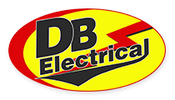For internal combustion engines, the ignition system is a driving force in the operation of the vehicle. Its job is to create combustion to power the engine to keep a vehicle in motion. It’s vital that each component in the ignition system delivers flawless and precision performance. One weak performing component is like a weak link in a chain. It only takes one underperforming part to cause the entire system to fail. Problems like hard starts, rough running or occasional stalling can be caused by many things, but an ignition system glitch should be investigated if you experience any of these problems.
If you’re new to working on ignition systems, it’s helpful to understand the function of its major components. Knowing the purpose of each part will help you diagnose performance issues with the system.
Major ignition system components
Ignition coils transform low voltage from the battery into volts so that spark plugs can generate the sparks necessary to enable combustion. In its most basic form, ignition coils serve as the “middleman” between the battery and spark plugs.
Spark plugs ignite fuel vapor to create combustion to power the engine. Worn spark plugs could be responsible for everything from hard starts to sluggish performance.
Ignition switches make the initial connection to start the vehicle. The ignition switch delivers the starting power needed to activate the entire ignition and electrical system. If the switch isn’t working, the vehicle isn’t starting.
Ignition rotors create the link for the passage of voltage from the ignition coil to the spark plug. A properly functioning ignition rotor enables the ignition of fuel vapor at a precise moment.
Ignition points are components used in certain ignition systems to activate the ignition coil at precise times. Ignition points do their job by opening and closing to allow electrical current to flow.
Ignition condensers do what the name suggests. They condense the spark at the contact point. The function of ignition condensers is important to reduce wear and damage to other components in the ignition system.
CDI modules work like a storage unit. They store electrical energy, and then they release it when needed to boost power and performance. Not every type of vehicle uses CDI modules. They are commonly found in powersports vehicles like ATVs, UTVs, street and dirt bikes, and watercraft that experience rough and bumpy rides.
Ignition gaskets seal the system so that oil, fluids and grime do not enter the system. Quality ignition gaskets must withstand a harsh environment to do their job.
Keeping your ignition system in good working order
There are different types of ignition systems, so not every vehicle type will have each of these components. It’s important to get to know the design if your ignition system to troubleshoot problems if you have hard starts, misfires or rough performance. Keeping your ignition system in prime condition is essential to reliable performance.


